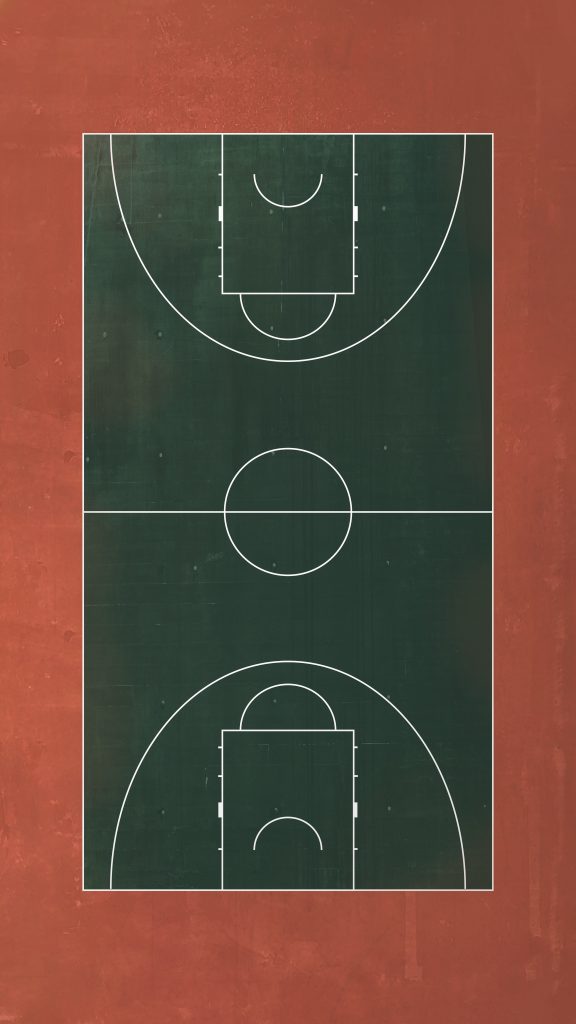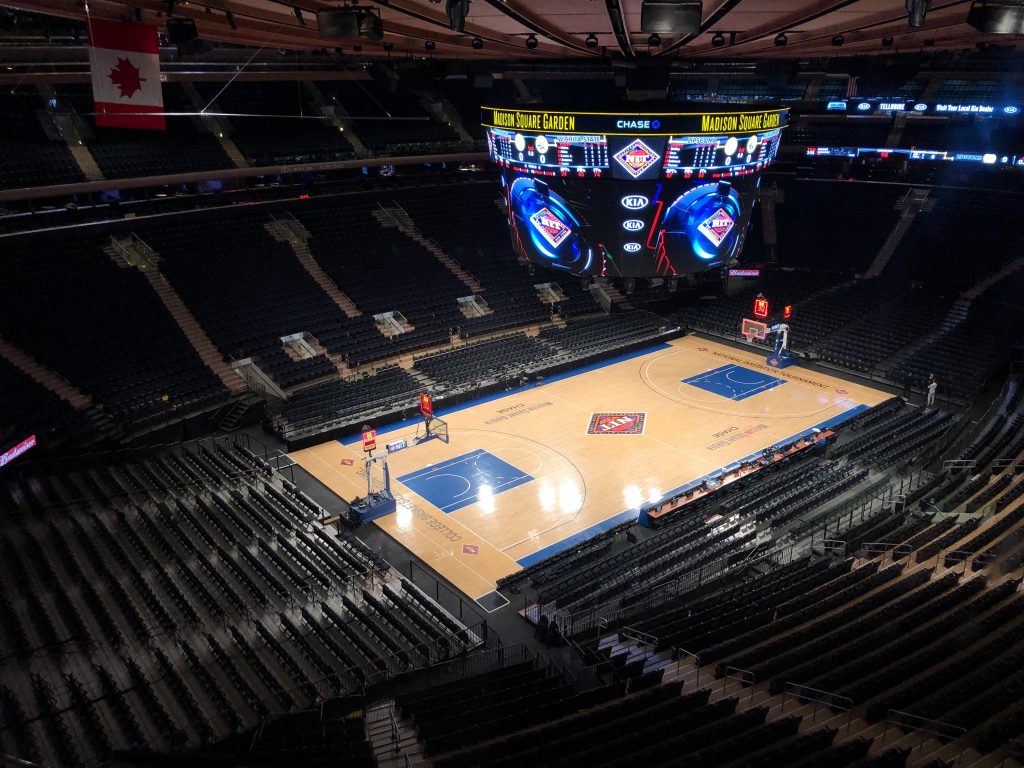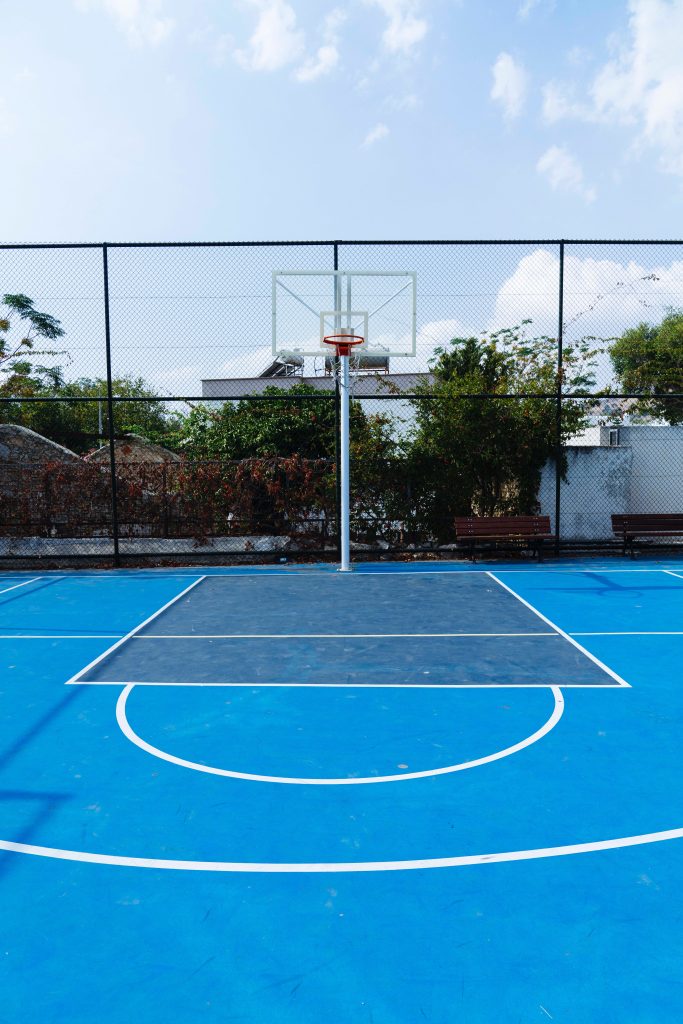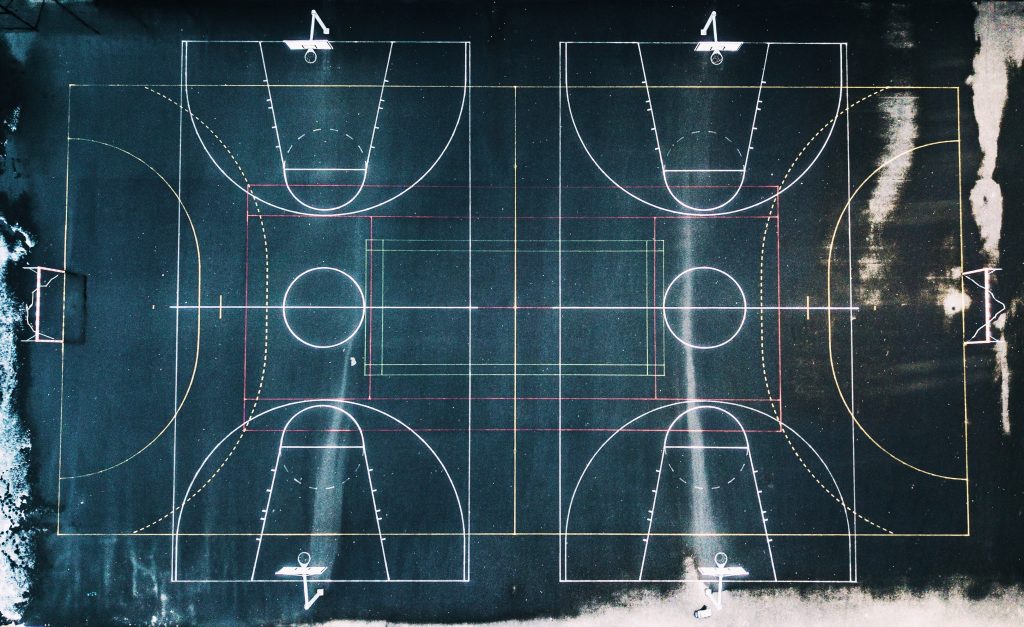Basketball courts have standard dimensions that are important for ensuring fairness and safety during gameplay. The standard dimensions for a basketball court are 94 feet in length and 50 feet in width, providing a playing area of 4,700 square feet.
The court is divided into two equal halves by a center line, with a basket located at each end of the court. The dimensions of the basket are also standardized, with a hoop height of 10 feet and a hoop diameter of 18 inches.
The standard dimensions for basketball courts are regulated and enforced by various organizations, including the National Basketball Association (NBA), the International Basketball Federation (FIBA), and the National Collegiate Athletic Association (NCAA).
In this post, I will discuss with you the basketball court dimensions, its history, and the difference between indoor and outdoor basketball courts.
Basketball Court Dimensions
The length of a standard basketball court is 94 feet, while the width is 50 feet, creating a rectangular playing area of 4,700 square feet. The dimensions of the court are critical to ensuring that the game is played fairly, with enough space for players to move around freely without interference.

Goal placement is another essential aspect of basketball court dimensions. The hoops are located at each end of the court, 10 feet off the ground, and measure 18 inches in diameter. The backboard that supports the hoop is typically 72 inches wide and 42 inches high.
The free throw line is located 15 feet from the backboard and is used to shoot free throws. The three-point line is located 22 feet away from the center of the hoop in the NBA, while it is 23 feet and 9 inches away in FIBA. The three-point line plays a crucial role in determining the value of a shot, with shots made beyond this line awarding three points.
Related: What Is The Standard Basketball Rim Size?
History and Evolution of Basketball Court Dimensions
The standard dimensions of a basketball court have evolved over time, with changes made to reflect advancements in technology and improvements in player safety. The first basketball court, created by Dr. James Naismith in 1891, was smaller than the standard size used today. The court was only 84 feet in length and 50 feet in width, with a smaller hoop that was only 10 feet off the ground.
Over time, changes were made to the court dimensions to reflect the evolution of the game. In the 1940s, the NBA established the current standard court dimensions of 94 feet in length and 50 feet in width, along with the standard hoop height of 10 feet.

The primary factor that has influenced changes to the court dimensions is player safety. For example, the introduction of the three-point line in 1979 created a larger playing area and encouraged more outside shooting, reducing the need for players to crowd around the basket and potentially leading to injuries. The standardization of the free throw line distance has also played a role in improving player safety, by ensuring that players are shooting from a consistent distance.
Difference Between Indoor vs. Outdoor Basketball Courts
When it comes to basketball courts, there are two main types: indoor and outdoor. While the dimensions of the courts are typically the same, there are several key differences between indoor and outdoor courts that should be considered when designing and building a basketball court.

Indoor basketball courts are typically found in gyms, recreation centers, and other indoor facilities. These courts have a hardwood or synthetic surface that provides a high level of traction and durability. The flooring is often designed to absorb impact, reducing the risk of injuries for players. Lighting is also a crucial factor in indoor courts, as it ensures that players can see the ball and the court clearly, even in low-light conditions.

Outdoor basketball courts are designed to be used in a variety of environments and are exposed to the elements. As a result, the surface of the court is typically made of materials such as concrete, asphalt, or rubber, which are more durable and can withstand exposure to the elements. The surface can be rougher than that of indoor courts, and players may need to wear shoes with more traction to avoid slipping or sliding.
The environment in which the court is located is another crucial factor to consider. For outdoor courts, factors such as sunlight, wind, and rain can impact the playing experience. In areas with high levels of sunlight, it may be necessary to install shading or protective measures to prevent the court from becoming too hot to play on.
Variations in Court Dimensions Across Different Leagues and Levels
Basketball court dimensions can vary across different leagues and levels of play. The most common court dimensions are used in the NBA, NCAA, high school, FIBA, and junior leagues.
The NBA court dimensions are 94 feet in length and 50 feet in width, with a hoop height of 10 feet. The free throw line is located 15 feet from the backboard, and the three-point line is 23 feet and 9 inches from the center of the hoop.
The NCAA court dimensions are the same as the NBA court, with the exception of the three-point line, which is 22 feet and 1 3/4 inches from the center of the hoop.
High school basketball court dimensions can vary slightly depending on the state or region. However, most high school courts are 84 feet in length and 50 feet in width, with a hoop height of 10 feet. The free throw line is located 15 feet from the backboard, and the three-point line is 19 feet and 9 inches from the center of the hoop.
FIBA court dimensions are slightly different from the NBA and NCAA courts. FIBA courts are 91.86 feet in length and 49.21 feet in width, with a hoop height of 10 feet. The free throw line is located 15.09 feet from the backboard, and the three-point line is 22.15 feet from the center of the hoop.
Junior league court dimensions can vary depending on the age group and level of play. However, most junior league courts are smaller than regulation courts, with smaller hoops and shorter distances for free throws and three-point shots.
Overall, the court dimensions for different leagues and levels of play can vary slightly, but they are all designed to provide a fair and competitive playing environment.
Designing a Basketball Court
Designing a basketball court requires careful consideration of various factors to ensure that the court is safe, functional, and enjoyable for players. Here are some factors to consider when designing a basketball court:

- Size and shape:
The size and shape of the court should be determined by the available space and the intended use of the court.
- Surface materials:
The surface materials used on the court should be chosen based on the level of play, the environment, and the intended use of the court. For example, hardwood or synthetic surfaces are best for indoor courts, while concrete or asphalt surfaces are suitable for outdoor courts.
- Hoop placement:
The placement of the hoops should be carefully considered to ensure that they are centered and at the appropriate height.
- Court markings:
The court markings, including the free throw line, three-point line, and center circle, should be placed accurately according to the appropriate regulations.
- Lighting:
Adequate lighting is essential for both indoor and outdoor courts to ensure that players can see the ball and the court clearly.
- Surrounding area:
The surrounding area of the court should be considered to ensure that there is enough space for players, spectators, and equipment.
By considering these factors and following the appropriate regulations, you can design a basketball court that is safe, functional, and enjoyable for players of all levels.
FAQs
Are the dimensions different for indoor and outdoor courts?
In some sports, such as basketball and tennis, the dimensions of indoor and outdoor courts can differ. For basketball, the standard indoor court is 94 feet long by 50 feet wide, while outdoor courts may vary in size. In tennis, outdoor courts can be slightly larger due to available space.
It’s crucial for athletes to be aware of the court’s dimensions to adjust their strategies and movements accordingly. Knowing the court’s size can give players a competitive advantage and help them perform at their best.
What factors should be considered when designing an outdoor basketball court?
When designing an outdoor basketball court, factors to consider include the court size, surface material, backboard height and material, hoop type, and location, lighting, surrounding fencing, and seating. It is also important to consider any local regulations and safety measures.
Have the dimensions changed over time?
It is believed that the dimensions of our universe have remained constant over time.
However, theories such as string theory suggest that there could be additional dimensions beyond the four we experience, but these dimensions are thought to be compactified and therefore not observable at our scale. The study of the universe’s dimensions is an active
area of research in theoretical physics.